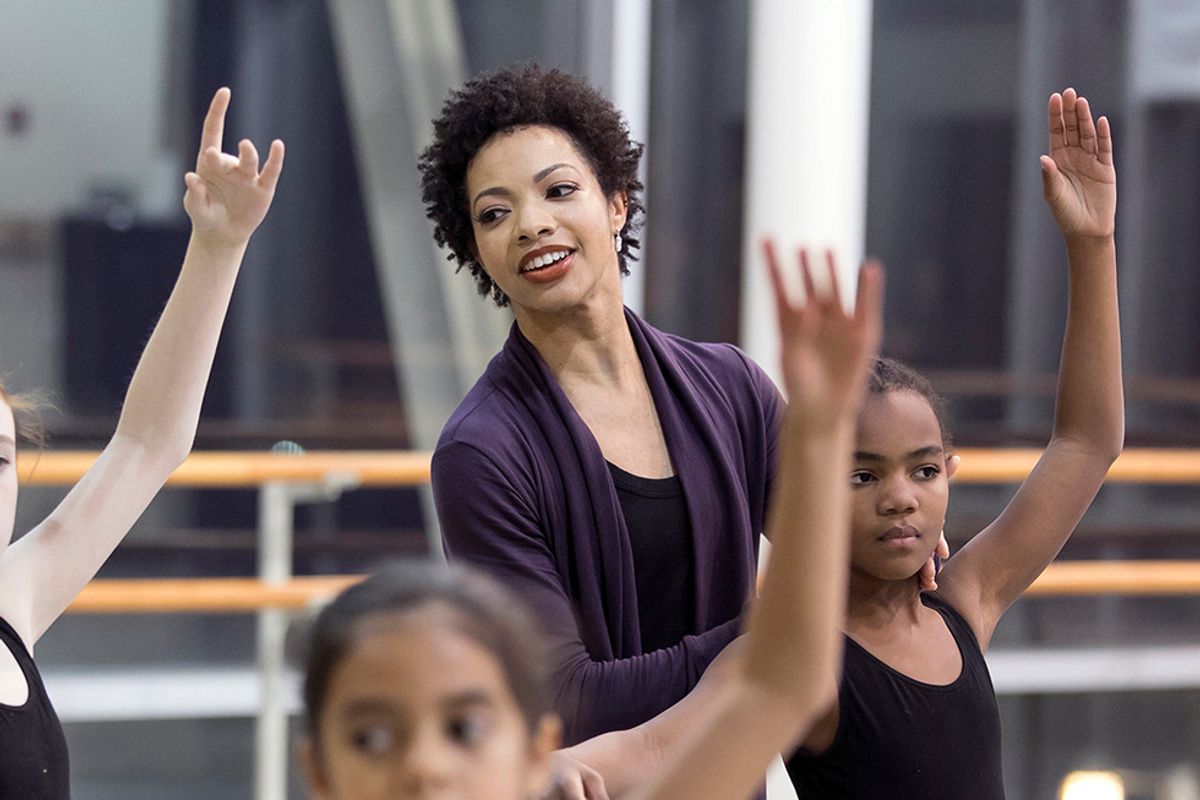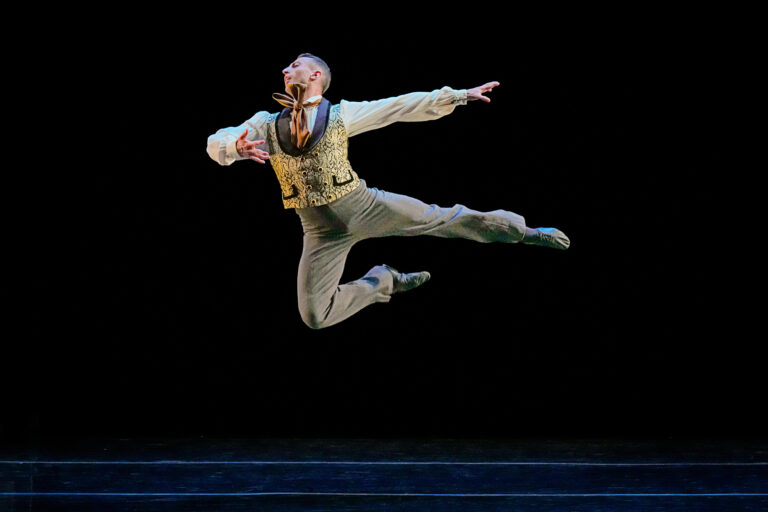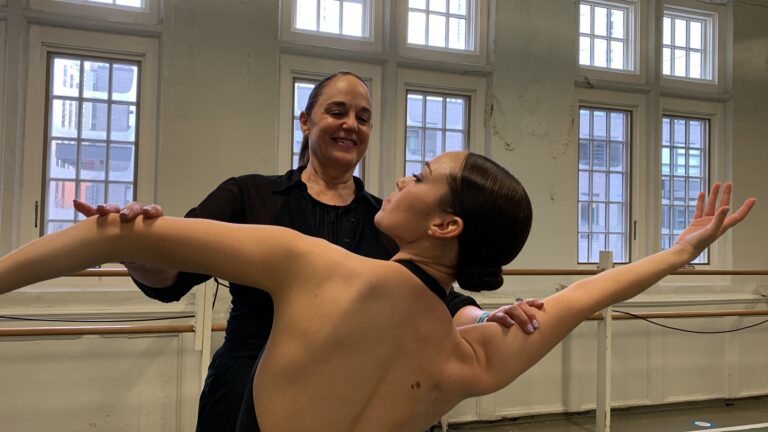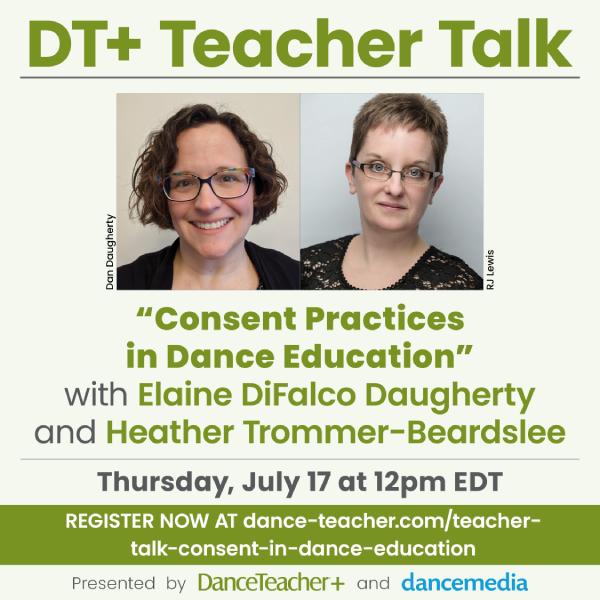
When Monica Stephenson was a student at Houston Ballet Academy, she was cast as Lauren Anderson’s swan double in Swan Lake. The role was just a few walks in Odile’s tutu and a veil as the scene changed, but it was a thrill for the 18-year-old Stephenson. Anderson, one of the few principal ballerinas of color, was the inspiration for Stephenson to attend Houston Ballet Academy.
For the role, wardrobe gave Stephenson a few pairs of Anderson’s special-order pointe shoes that were brown to match her skin tone. “That really helped me,” Stephenson says. “I wound up wearing her specs my entire career. Sometimes people don’t realize when they’re impacting a young person.”
Stephenson never forgot what it meant to have a role model like Anderson. She knew she’d want to inspire ballet students of color herself someday.
In the summer of 2018, Stephenson, now 35, became associate head of school for The Washington School of Ballet’s Southeast Campus at THEARC (Town Hall Education Arts Recreation Campus), a community center that serves an under-resourced neighborhood in DC. Eighty-four percent of the students in The Washington Ballet’s program there are students of color, 75 percent of whom are African-American.
Going From Performer to Teacher
The job was a big promotion for Stephenson. She had started her teaching career just two years earlier, after earning her master’s in dance education from NYU. She now manages 16 faculty and more than 300 students—in addition to teaching at least 17 hours a week.
“It’s my dream job, and I’m surprised at how quickly it happened,” she says. “I knew the opportunity to make this kind of impact in children’s lives wouldn’t come up again.”
The “quick” success was the result of years of navigating the ups and downs of a career in ballet. Stephenson started training in her hometown of Fayetteville, North Carolina. At 14, she started training at the University of North Carolina School of the Arts and finished with two years in the professional training program at Houston Ballet Academy. Her first job was as a trainee with The Washington Ballet, where there was no equivalent to Lauren Anderson. “There weren’t other women who looked like me onstage,” she says.
She landed a spot in Dance Theatre of Harlem’s Ensemble company, but later that season the company folded, crushing her dream of a long career there. Ever resilient, Stephenson didn’t let the closure slow her down. She earned her Pilates and Gyrotonics certifications and freelanced with Pennsylvania Ballet and London’s Ballet Black before joining Los Angeles Ballet for four seasons—once again the only black woman. She also earned her bachelor’s in business education online from East Carolina University.
She moved back to New York City to pursue musical-theater opportunities. Teaching was still not on her radar. “I never thought about teaching ballet when I was a professional dancer,” she says. But while auditioning for shows, she kept taking ballet class daily at Steps on Broadway and realized performing wasn’t her passion.
She would go on to receive the Steinhardt Dean’s Opportunity Scholarship to the master’s program in dance education at NYU, with a concentration in American Ballet Theatre Pedagogy. In the middle of the program, she was hired by ABT as coordinator for Project Plié, the company’s diversity initiative championed by Misty Copeland. And that’s where she impressed Julie Kent, who had just taken over ABT’s summer intensive. “During education department meetings, the passion, enthusiasm and skill with which Monica presented about her program was just overall very impressive,” says Kent.
Coming Full Circle
Moving to DC and becoming a full-time teacher was a big decision for Stephenson, but she knew it was right. “I thought, ‘I get to give back to the artform and have an impact on creating more diversity in ballet, which I’m so passionate about,'” she says. “It was like, ‘This is the jackpot.'”
The transition was rewarding, but not easy. The hours were challenging—evenings and weekends over a five-day workweek that often turned into six or seven days. She also had to adjust to teaching students with a range of needs. “The children have a variety of dreams, goals and interest levels in dance. How do you serve all children in the same room in the same school?” she says. “But early on you get the significance of what you’re doing—training the whole child, not just technique. I really connected with that.”
When the Southeast Campus director position became vacant, Stephenson put her name forward for the job. “I wanted to keep pushing the Southeast Campus by working more closely with the Northwest school campus,” she says. (The Northwest Campus shares space with the professional company and tends to attract more pre-professional students.) “I also wanted to bring in more teachers of color who had professional ballet careers.”
For the full article, pick up a copy of DT’s March issue here.






